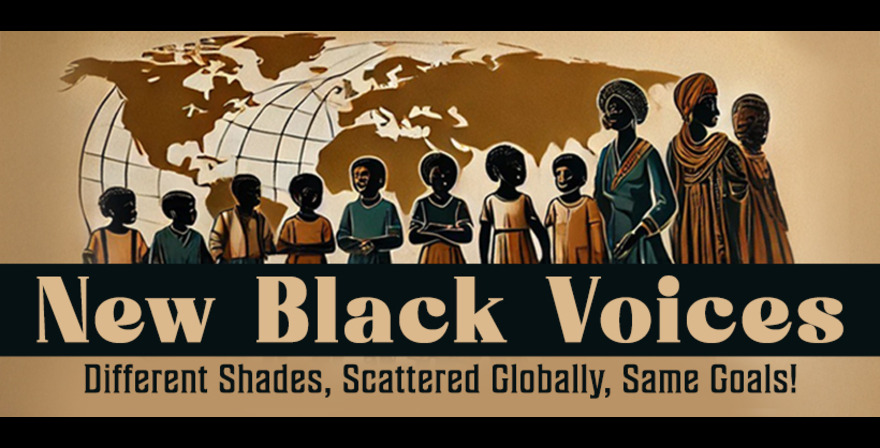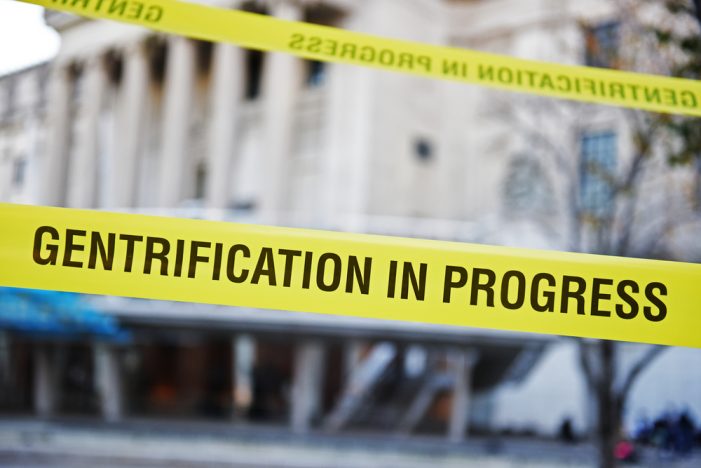By Brian Figeroux, Esq., the Law Firm of Figeroux & Associates | Editorial credit: a katz / Shutterstock.com
Introduction: Understanding Gentrification
Gentrification is a process of urban transformation in which lower-income neighborhoods are revitalized by an influx of more affluent residents, often accompanied by rising property values, increased rents, and cultural displacement. Though it is sometimes framed as a necessary component of urban renewal, gentrification in New York City has had devastating consequences—particularly for Black and Latino residents who have historically lived in and contributed to these communities. This article examines the definition and process of gentrification, explores the economic and political consequences for Black and Latino New Yorkers, and offers potential legal, political, and community-based remedies.
- Defining Gentrification in the NYC Context
Gentrification in NYC generally involves developers, landlords, and incoming middle- to upper-class residents transforming historically working-class, Black, and Latino neighborhoods into more affluent enclaves. Hallmarks include:
- Renovation of old buildings into luxury condos or co-ops.
- The proliferation of upscale restaurants and retail.
- Increased police presence and “quality-of-life” crackdowns.
- Rising rents and property taxes.
- Evictions or buyouts of long-term tenants.
Neighborhoods like Harlem, Bedford-Stuyvesant, Crown Heights, the South Bronx, and Bushwick have all seen significant demographic and cultural changes over the past two decades. In most cases, these changes were not organic or community-led but rather driven by public-private real estate ventures backed by political interests.
- The Economic Consequences for Black and Latino Residents
- Displacement and Housing Insecurity
Gentrification forces out long-term tenants who can no longer afford skyrocketing rents or are harassed by landlords eager to capitalize on rising property values. Rent-stabilized and Section 8 tenants face pressure through buyouts, construction harassment, or outright evictions. Many displaced families find themselves in less accessible or less desirable neighborhoods, exacerbating housing insecurity. - Wealth Stripping via Property Taxes and Foreclosures
Longtime Black and Latino homeowners are often unable to pay increased property taxes, leading to foreclosures and the loss of generational wealth. In NYC, the average property tax bill in a gentrifying neighborhood can increase by over 50% within five years. Homeowners who cannot keep up with these changes often lose their homes to speculative investors or tax lien sales. - Loss of Cultural Capital and Small Businesses
As rents increase, small minority-owned businesses are pushed out and replaced by corporate chains or white-owned boutiques that cater to the new demographic. This erodes the cultural identity of the community and diminishes local economic power. - Employment Disruption
Local workers in service sectors such as food, childcare, and elder care are displaced alongside their communities, losing access to employers and transit routes. New businesses often bring new hiring practices that don’t prioritize legacy residents.
III. The Political Consequences: Disempowerment and Disenfranchisement
- Electoral Displacement
Gentrification changes the voter demographics in city council and state assembly districts. The replacement of working-class Black and Latino families with wealthier, often white residents, shifts the political landscape. As a result, progressive or community-based candidates are often replaced by more moderate or developer-friendly officials. - Weakened Tenant Power
Displacement breaks up organized tenant associations and community boards. These groups historically advocated for rent control, public housing reform, and anti-displacement policies. With their base disrupted, their influence wanes. - Increased Policing and Surveillance
Gentrification often comes with increased policing, particularly under “broken windows” and “quality of life” strategies. This disproportionately affects remaining Black and Latino residents, who face higher rates of stop-and-frisk, ticketing, and arrest. The criminalization of these communities serves as another form of economic destabilization. - Cultural Erasure
Public art, murals, and community institutions (churches, schools, cultural centers) are often destroyed or co-opted. The political power of cultural narratives and historical memory is replaced with sanitized versions of neighborhood “history” that center newcomers.
- Remedies and Resistance: Legal, Economic, and Political Solutions
- Stronger Rent Protections and Anti-Harassment Laws
New York must expand protections under the Housing Stability and Tenant Protection Act (HSTPA) of 2019 to include automatic legal representation in housing court, criminal penalties for landlord harassment, and a cap on luxury renovations as a tactic for increasing rents. - Community Land Trusts (CLTs)
CLTs are nonprofit organizations that buy and hold land in perpetuity for community use. Housing on this land is kept permanently affordable. Supporting CLTs in places like East Harlem, the Bronx, and Brooklyn is a key step toward community control of housing. - Tax Relief for Legacy Homeowners
Implementing targeted tax freezes or rollbacks for long-term residents and seniors could prevent involuntary displacement through tax liens. This would preserve intergenerational wealth for Black and Latino families. - Moratorium on Luxury Development in Vulnerable Areas
NYC should implement zoning restrictions that prohibit new luxury construction in gentrifying areas unless accompanied by deeply affordable units and community benefit agreements (CBAs). - Political Mobilization and Voter Education
Organizations like Make the Road NY, VOCAL-NY, and Churches United for Fair Housing are working to re-engage displaced and vulnerable voters. Supporting these efforts is crucial for maintaining local political power. - Preservation of Cultural Districts
The City should designate Black and Latino cultural districts with financial support for arts institutions, cultural events, and historical preservation. This can legally protect against cultural erasure. - Real Estate Transparency Laws
Mandating public disclosure of all LLC real estate purchases and campaign donations by developers would expose the corruption underlying many rezonings and luxury developments.
Conclusion
Gentrification in New York City is not just an economic process—it is a racialized mechanism of dispossession that transforms entire neighborhoods and displaces the very communities that built them. While some argue that gentrification brings “revitalization,” for Black and Latino residents, it often means exclusion, trauma, and disinheritance. Without structural intervention—legal protections, community control, and political resistance—the cycle of gentrification will continue to erode the fabric of New York’s most vulnerable neighborhoods. Remedies exist, but they require political will, grassroots organization, and a reframing of urban development as a tool for equity rather than exploitation.

